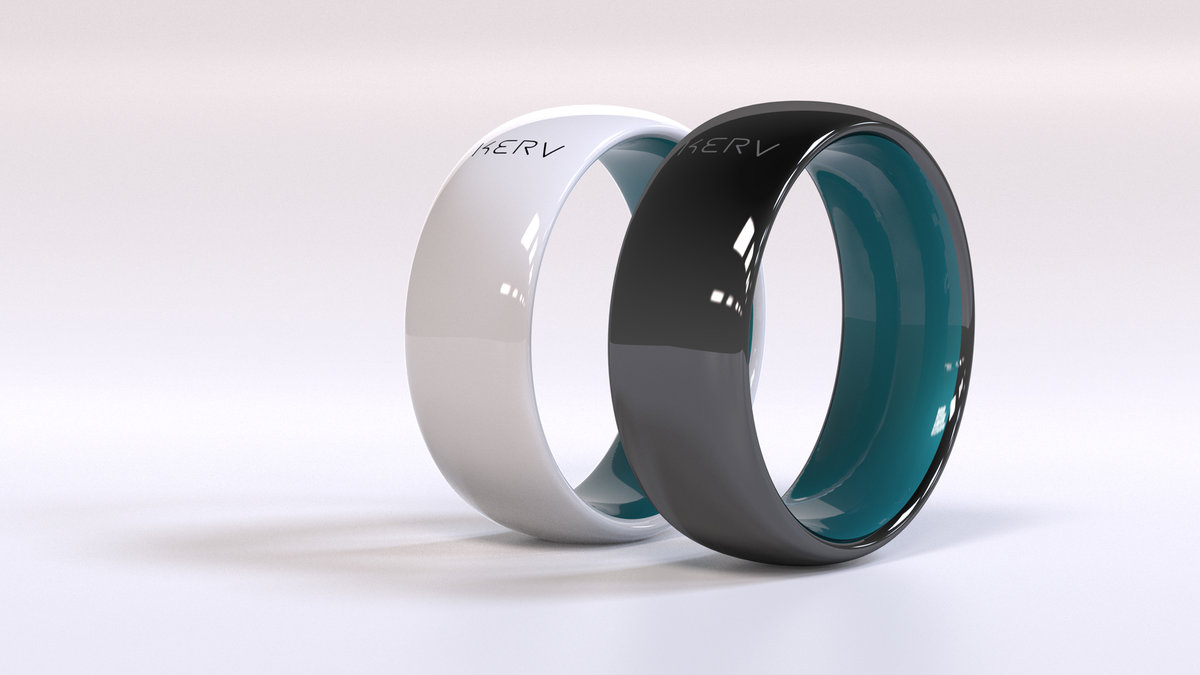The best concrete mixers for summer cottages and houses for 2024
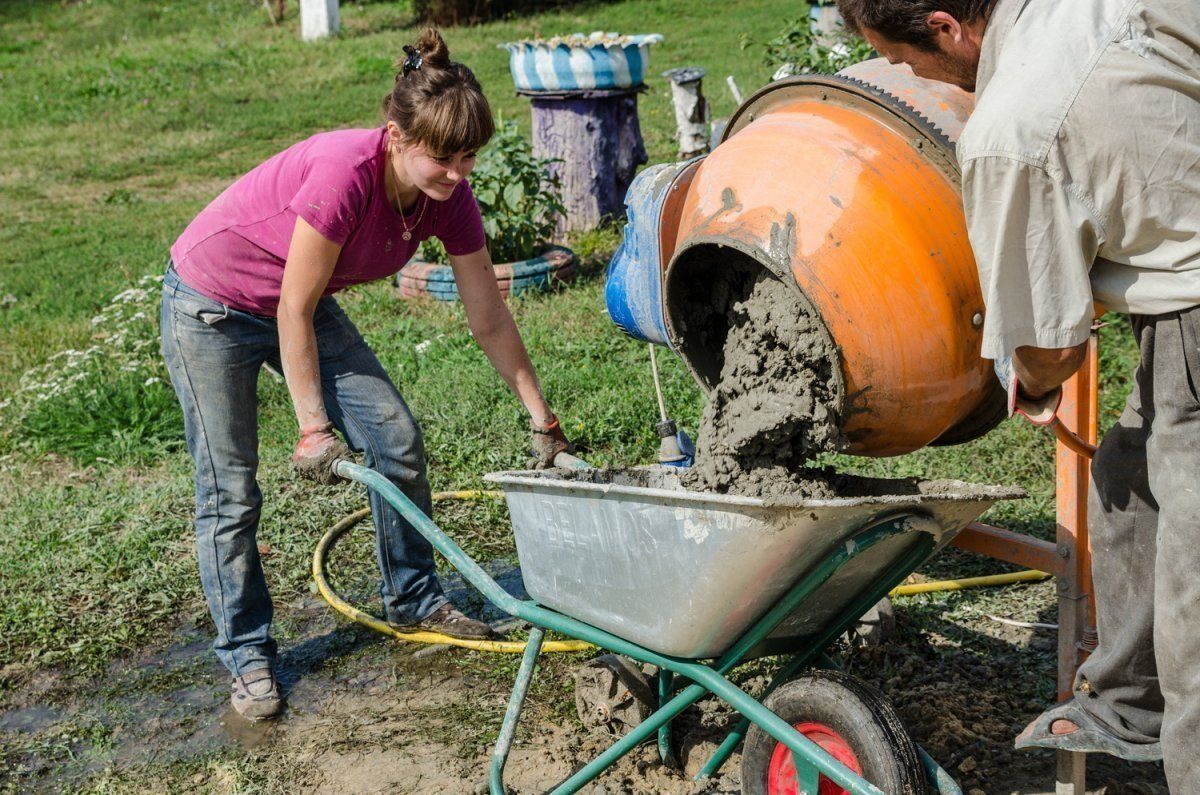
The construction of a country cottage or a country house requires a lot of manual work. The use of a mechanized device such as a concrete mixer will help save time and effort. This construction machine is designed for the preparation of concrete mixture and greatly facilitates this operation, especially when the material is needed in significant quantities.
Concrete mixer device
- Drum. Working container in which the components to be mixed are placed. The performance of the machine depends on its size and type.
- Stanina. This is a construction of various elements (pipes, profiles), which unites all parts and assemblies of the machine into one whole. Can be equipped with a chassis for easy transportation.
- Kneading details (blades, augers). They directly affect the components of the prepared solution.
- Engine (petrol or electric) and transmission. The details of the batch are set in motion.
- Unloading mechanism for extracting the prepared mixture.
- Control unit for turning on and off the unit and adjusting the speed of rotation of its drum.
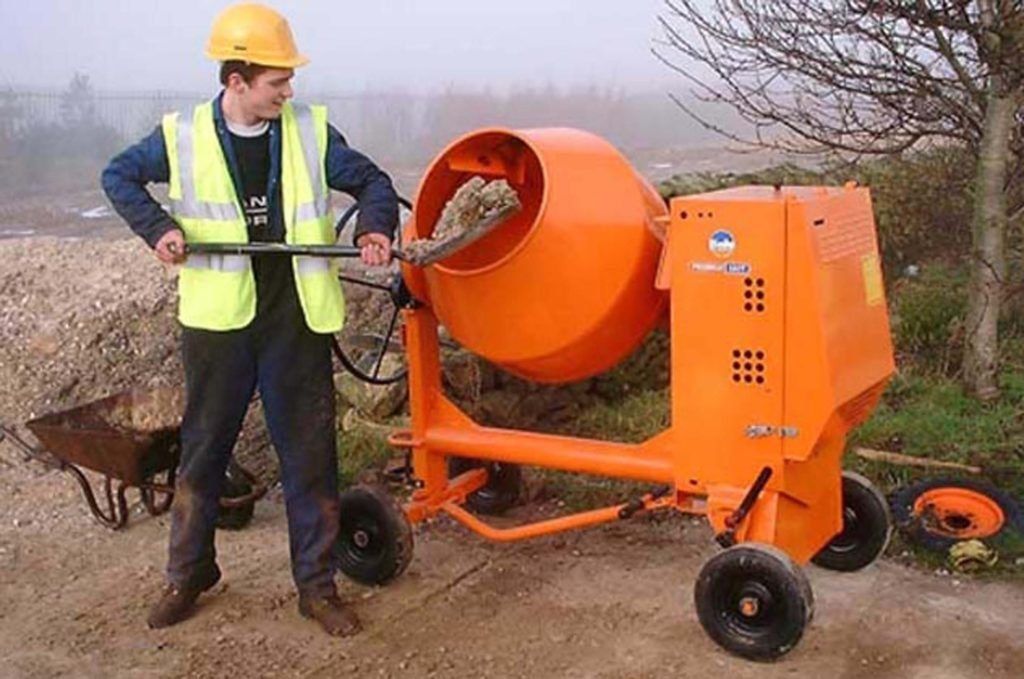
What are concrete mixers
By duration of work
- Cyclic action. These models prepare a small amount of solution and require stoppages during operation. If you do not let the concrete mixer "rest", it will quickly use up its resource. These units are good for private construction.
- Continuous action. They can work for a long time and without interruption, they are used at large facilities where there is a need for large volumes of mixture.
By the principle of work
Gravitational type
The action of the unit is based on the force of gravity of the earth: under the weight of its weight, the mixture falls from fixed blades fixed on the container, which thoroughly mix the solution. The container itself rotates on its axis, its slope can be changed by controlling the intensity of stirring the mixture. Such machines prepare viscous solutions. Easily taken apart and transported.
There are also the following types, depending on the drive mechanism:
- Coronal. The drum is equipped with a gear ring along its entire circumference, which can be made of steel, cast iron or plastic. A cast iron crown is inexpensive, but it rattles quite a lot during operation. The plastic crown is quieter in operation. The most expensive option is a steel crown. Machines are not protected from debris falling into them. They break more often, but are easily repaired.
- Gearboxes.The most reliable, they are more durable, rarely break, but they are more difficult to repair than crown ones.
Pros:
- Equipped with a low power electric motor, which reduces energy consumption.
- Many models have wheels for ease of movement.
Minuses:
- After each operation, the pear must be thoroughly cleaned and washed. Otherwise, the remaining solution gradually forms a thick layer.
- Liquid solution may spill out during operation.
- The finished mixture is difficult to scoop out of the container, so you need to prepare a special trough into which the solution can be drained.
- Many models require a 380 W connection; not every private builder has such an opportunity.
Forced action
The capacity in such machines is stationary, only the blades in it work. In such concrete mixers, mixtures are prepared with various additives and with a small amount of water. They are large and not very convenient for private construction with a small amount of work.
Pros:
- High-quality mixing of the mixture.
- It is possible to dose the unloading of the solution.
Minuses:
- If stones or rubble get between the blades and the walls of the containers, it will jam.
Concrete mixers can be equipped with a skip. This elevator makes it easier to feed the material into the machine, which speeds up the mixing process.

By drive type (energy source)
- Manual. They are not very popular, since they have a small volume and require the work of an operator, which does not reduce labor costs. Their plus is the autonomy of work.
- Hydro and pneumatic. Liquid or air is supplied to the mixing elements under high pressure. They are used in industry as they require additional equipment.
- Motor-driven. Engine type - diesel or gasoline. They are autonomous, but have a number of disadvantages: noise during operation, the cost of gasoline and the presence of exhaust gases that are harmful to humans.
- Electrical. Most in demand. The drum volume of such units varies from 30 to several thousand liters.

How to choose a concrete mixer
Main selection criteria
- What time of year the unit will be used. Most of the models are focused on work from spring to autumn. Therefore, if necessary, it is worth spending time looking for a machine that will prepare a solution of good quality even at low temperatures.
- Unit dimensions. If necessary, compact disassembled models will be suitable for transport.
- Model class. There are both more expensive professional cars and budget amateur cars on the market. When making a choice, be guided by your needs: when you need to mix more than 7 cubic meters of building mixture per day, it is better to purchase a professional concrete mixer. Otherwise, you can buy a household model. For simple work, models of the gravity type are better suited.
- Engine power. This indicator will depend on the amount of continuous operation of the machine. For continuous operation of the unit, a power of over 1000 W will be needed; for domestic needs, a value of about 700 W is quite suitable. It is worth remembering that the higher this value, the more the load on the network increases. It is important that the engine is mounted on a solid metal base to reduce the risk of rapid wear.
- Voltage. For the construction of a private house, it will be optimal to choose an engine that requires 220 V. Professional models need a voltage of 380 V.
- Drum volume. For private construction, a volume of 100 to 300 liters will suffice, depending on the degree of complexity of the tasks and the intensity of work, for a professional this figure should exceed 300 liters.
- The strength of the drum. Smooth and beautiful containers, without welded seams, are made of thin steel sheets. Thick metal drums are more reliable and durable, but less aesthetically pleasing.
- A useful feature is an overload sensor. When the temperature in the winding rises to a critical level, it will turn off the motor.
- The loading / unloading option is convenient, saves time and effort by not requiring these operations to be performed manually.
- Car color.According to SNIP, rotating mechanisms must be painted in bright warm colors to be visible.
- How much does the device cost? Gravity-type concrete mixers with a capacity of 100-150 liters are located in the price range from 7 to 16 thousand rubles. More productive cars cost from 15 to 45 thousand rubles. Forced-type devices are much more expensive: their price is from 50 thousand rubles. and higher.
- Which car is better to buy? This question is no less important for the consumer. Models from Czech, Polish and German manufacturers are popular because of their quality, functionality and ease of use. Chinese units are attractive at an affordable price. Domestic concrete mixers are somewhat inferior in quality to their European counterparts, but their undoubted advantage is that the necessary spare parts are not difficult to find in case of malfunction. It is profitable to purchase a concrete mixer in stores that work directly with the manufacturer and provide a guarantee, as well as have their own service and repair service.

Top manufacturers
- Zitrek (Czech Republic);
- Denzel (Germany);
- VseInstrumenty.ru company (Russia) has been producing tools and equipment under the Inforce trademark since 2015;
- Whirlwind (joint Russian-Chinese production);
- JSC Lebedyanskiy Plant of Construction and Finishing Machines (Russia);
- Caliber (Russia);
- "TeploTrade", trade mark "Profmash" (Russia).

Rating of popular models of high-quality concrete mixers
The best compact home models
RedVerg RD-CM 63
This small Chinese concrete mixer with a volume of 63L is affordable and easy to operate. Not a bad option for summer cottage construction.

- Inexpensive;
- The crown is stamped with sufficient quality;
- Simple assembly.
- Noisy work;
- Not a very powerful engine.
Average price: 8000 rubles.
SBR-100
The portable model with a belt drive is optimal for country or private suburban construction. The moving parts of the unit are connected by a soft belt that changes their speed of rotation. Within one and a half minutes, the solution will be ready in the container.

- Connection to the 220 V network;
- The four-piece crown is made of cast iron;
- If the belt is damaged, it can be easily replaced.
- May stagger when overloaded.
Average price: 13,500 rubles.
Compulsory concrete mixers
Lebedyan RN-200
This device can be used for professional construction: it is permissible to start a new production cycle immediately after the end of the previous one. A powerful electric motor facilitates thorough mixing of the solution, including from large (up to 5 cm) components.
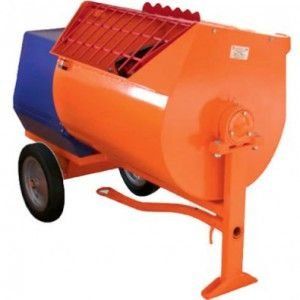
- Profitability;
- Control buttons are located on the engine cover;
- The speed of rotation of the blades makes it possible to obtain a solution within 2 minutes.
- High price.
Average price: 59 600 rubles.
MISOM SO 351-300
With a high power of the machine (2200 W), it is capable of mixing up to 300 liters of solution in its container. Moreover, the model is distinguished by a low noise level during operation.

- Small size;
- High performance.
- High price.
Average price: 70,000 rubles.
Gravity Concrete Mixers
Profmash B-180
The Russian-made apparatus is equipped with an 850 W electric motor. The rotation speed of the drum is 30 rpm, which makes it possible to prepare a good quality solution. The machine needs to be connected to a 220 V network, so it can be used in any conditions. The crown made of polyamide has 4 parts, which can be replaced without removing the drum.

- Convenient to unload the ready mix;
- Wheels for easy movement;
- Affordable price.
- The design of the apparatus has not been finalized.
Average price: 14 620 rubles.
PRORAB ECM 180 A
A versatile machine that can be used both for the preparation of mortar and fertilizers and mixtures for animal feeding. A volume of 180 liters is enough to prepare up to 130 liters of the mixture. The peculiarity of the device is that the drum is deflected at any angle, and, if necessary, it can be fixed in a certain position.

- Protective cover on the drive;
- There are wheels.
- The power cord is short;
- The engine gets very hot at maximum load.
Average price: 14,000 rubles.
Whirlwind BM-180
This lightweight (62 kg) model is suitable for small volume construction work. The voltage required for its operation is 220 V, so the concrete mixer is easy to connect in domestic conditions. The 800 watt electric motor provides sufficient rotation speed for fast preparation of a quality solution.
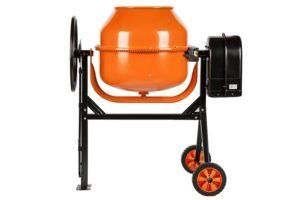
- Cast iron crown;
- Convenient wheels for transportation;
- Good welding quality.
- Unsatisfactory quality of individual elements.
Average price: 15 500 rubles.
Parma B 201 E
A domestically produced machine mixes concrete mortars and paint mixtures. Its main characteristics are operating voltage 220 V, weight 70 kg, drum volume 200 liters.

- Cast iron crown;
- Button control;
- Wheels for transportation;
- Drum fixation in one position;
- Engine power is less than stated by the manufacturer.
Average price: 14,200 rubles.
Caliber TSE 65/220
The compact concrete mixer produces 44 liters of mortar in one go. It is connected to a 220 V network, which makes it convenient for domestic use. A good example of a combination of price and quality.
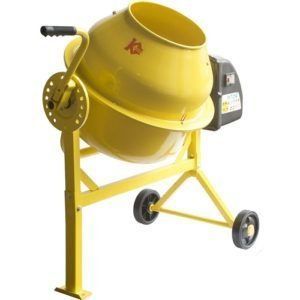
- Build quality;
- Compactness;
- Affordable price.
- No engine cooling;
- The crown is made of metal.
Average price: 9300 rubles.
PRORAB ECM 260
The machine with a large capacity (260 l) allows you to prepare up to 200 l of the mixture. Such indicators are achieved by equipping with a powerful electric motor (1.8 kW). A large and rather heavy concrete mixer (140 kg) is mounted on a solid steel structure.

- The crown is made of cast iron;
- All-round shroud to protect the crown;
- There are options for connecting to a network with different voltages (220 and 380 V).
- Noisy work;
- Not cheap model.
Average price: 40,000 rubles.
ZITREK ZBR 700/220 B
This unit will be an excellent choice for those people who are going to engage in construction seriously and for a long time. It can mix large batches of concrete solution, because the volume of its drum is as much as 500 liters. The entire structure of the machine is treated with a special anti-corrosion mixture, so it is not afraid of bad weather.

- Power 2200 W;
- The crown is made of cast iron;
- High build quality.
- High price.
Average price: 74,000 rubles.
When planning to purchase a concrete mixer, it is worth weighing all the pros and cons of the purchase. Perhaps, with a small amount of work, it will be easier and more profitable to rent this unit.
new entries
Categories
Useful
Popular articles
-

Top rating of the best and inexpensive scooters up to 50 cubic meters in 2024
Views: 97661 -

Rating of the best materials for noise insulation for an apartment in 2024
Views: 95022 -

Rating of cheap analogues of expensive drugs for flu and colds for 2024
Views: 91750 -

The best men's running shoes in 2024
Views: 87680 -

Top ranking of the best smartwatches 2024 - price-quality
Views: 85091 -

Best Complex Vitamins in 2024
Views: 84801 -

The best dye for gray hair - 2024 top ranking
Views: 82406 -

Rating of the best wood paints for interior use in 2024
Views: 77202 -

Ranking of the best action cameras from China in 2024
Views: 75269 -

Rating of the best spinning reels in 2024
Views: 74827 -

The most effective calcium supplements for adults and children in 2024
Views: 72462 -

Top rating of the best means for male potency in 2024 with a description
Views: 68296
